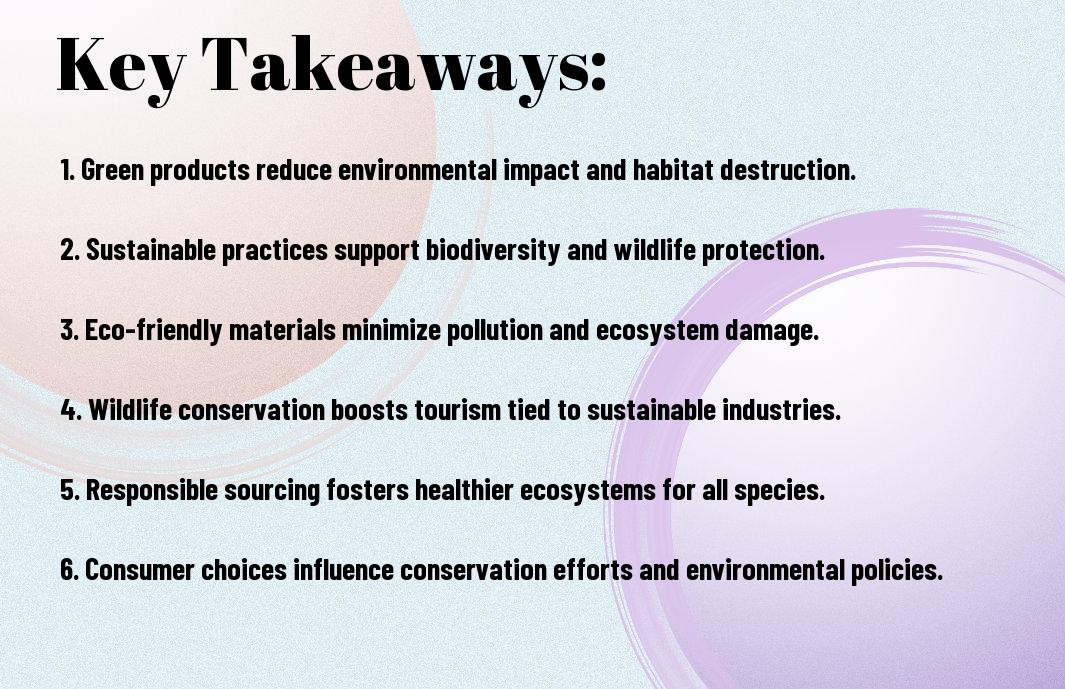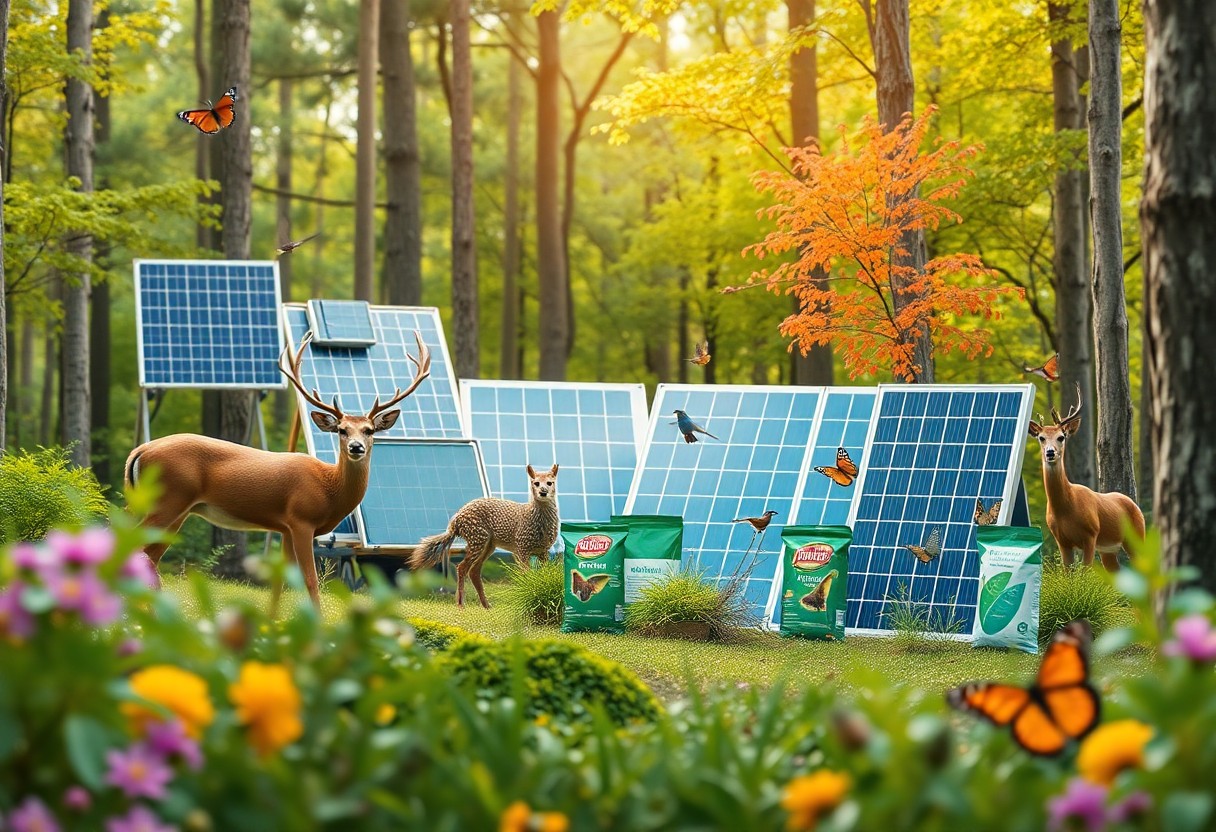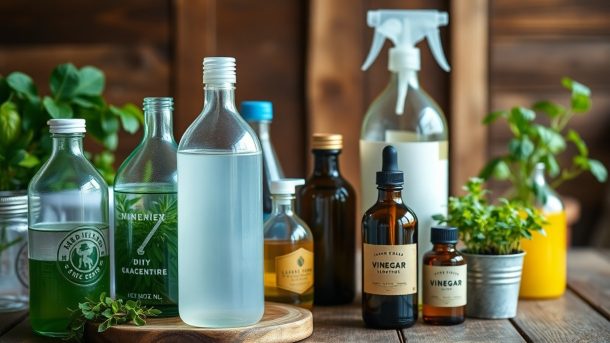As you consider your impact on the environment, you may wonder how your daily choices affect the planet’s precious water resources. By incorporating green products into your routine, you can significantly reduce your water usage. You can explore options like those listed in 5 Eco-Friendly Products That Save Water and Energy to make a positive change. Your decisions can help mitigate water waste and contribute to a more sustainable future.
Key Takeaways:
To reduce water consumption and promote sustainability, consider the following points about green products and their role in water conservation:
- Using eco-friendly appliances and fixtures can significantly reduce water waste by minimizing leakage and optimizing water usage, thus helping to save water for future generations.
- Sustainable products, such as low-flow showerheads and toilets, are designed to reduce water consumption while maintaining performance, making them an excellent choice for environmentally conscious consumers.
- Purchasing products with environmental certifications, such as WaterSense or EcoLabel, ensures that the products meet water efficiency standards, contributing to a significant reduction in water usage over time.
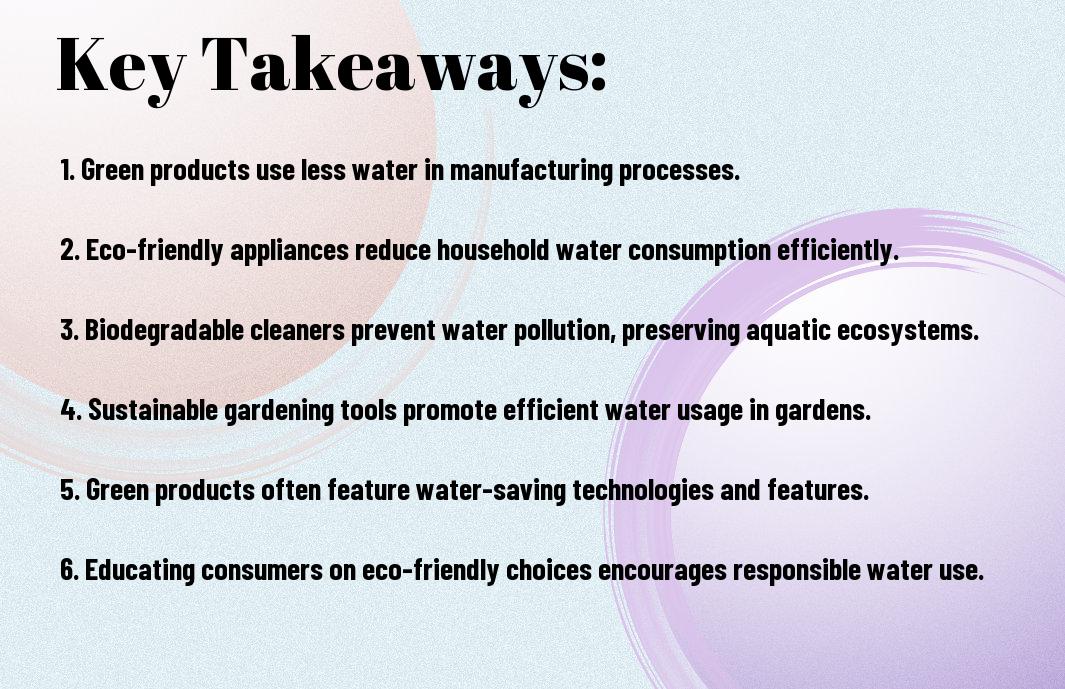
Benefits of Green Products
For individuals seeking to reduce their environmental footprint, green products offer a viable solution. You can make a significant impact by incorporating these products into your daily life, reducing your reliance on harmful substances and promoting a healthier planet.
Reduction of Water Pollution
By utilizing green products, you help decrease the amount of pollutants that enter your waterways, protecting aquatic life and preserving the quality of your water supply. This simple switch can have a lasting impact on your environment.
Conservation of Water Resources
By choosing green products, you contribute to the conservation of your water resources, reducing the demand on this precious commodity and helping to ensure its availability for future generations. Your actions can make a significant difference in preserving the world’s water supply.
Due to your thoughtful choices, the conservation of water resources becomes a more achievable goal. As you continue to use green products, you’ll notice a decrease in your water consumption, and your contribution to the preservation of this vital resource will grow, ultimately benefiting both you and the environment.
Eco-Friendly Alternatives
Now, as you explore ways to reduce your water footprint, you’ll find a range of eco-friendly alternatives that can make a significant impact. These alternatives can help you conserve water and reduce your environmental impact, allowing you to live a more sustainable lifestyle.
Water-Efficient Appliances
With the advent of technology, you can invest in water-efficient appliances that use significantly less water than traditional ones, helping you save water with every use. You can opt for appliances with low-flow features, which can greatly reduce your water consumption.
Sustainable Water Management Systems
By adopting sustainable water management systems, you can effectively manage and conserve water in your daily life. You can implement rainwater harvesting systems or greywater reuse systems, which can help reduce your water bills and minimize your environmental impact.
In fact, sustainable water management systems can be tailored to your specific needs, allowing you to maximize water conservation in your home or community. You can explore various options, such as drip irrigation systems or water-efficient landscaping, to create a water-friendly environment that benefits both you and the planet.
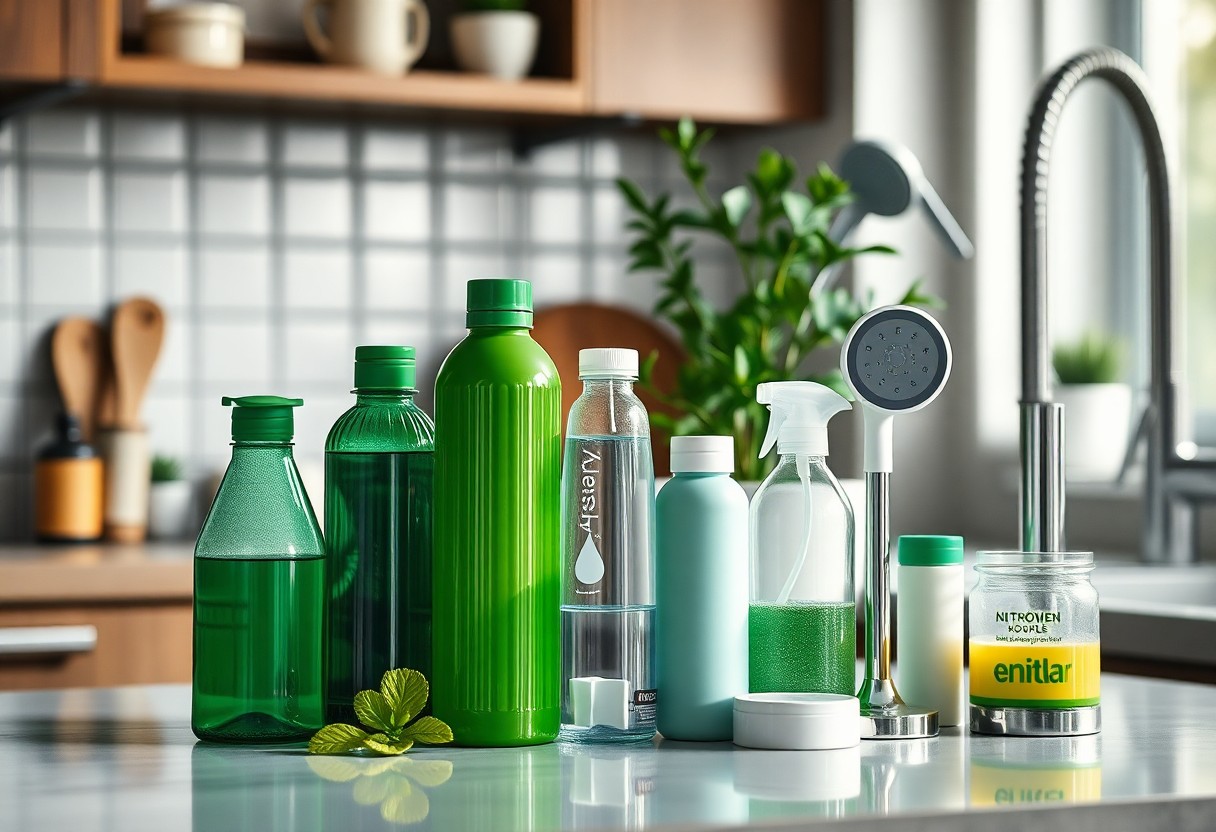
Impact on the Environment
Unlike traditional products, green products have a significantly lower environmental impact, allowing you to reduce your ecological footprint and contribute to a healthier planet.
Decrease in Water Waste
Diminishing your water consumption is easier with green products, as you can minimize the amount of water used in production and disposal, ultimately reducing the strain on your local water resources.
Protection of Aquatic Ecosystems
Adjacent to the benefits of reducing water waste, you can also help preserve aquatic life by choosing green products, which tend to have fewer harmful chemicals that can pollute your waterways.
Water conservation is imperative for maintaining the delicate balance of your aquatic ecosystems, and by using green products, you can play a significant role in protecting these vital environments, ensuring the long-term health and biodiversity of your planet, and the well-being of the species that inhabit it, including your own.
Role of Individuals
All individuals have a significant part to play in saving water by making conscious choices in their daily lives. You can start by using green products that are designed to reduce water waste, and by doing so, you will be contributing to a larger cause.
Making Informed Choices
About the products you use, it is vital to consider their environmental impact. You should look for products with minimal packaging and those that are designed to conserve water, allowing you to make a positive change in your daily habits.
Promoting Water Conservation
Around your community, you can take steps to promote water conservation by sharing your knowledge with others. You can encourage your friends and family to use green products and adopt water-saving practices, inspiring a collective effort to protect this precious resource.
This collective effort can lead to a significant impact when you consider the number of people involved. You can participate in local initiatives, support organizations that work towards water conservation, and make environmentally conscious decisions in your own life, ultimately contributing to a more sustainable future for your community and the environment as a whole.
Community Involvement
Once again, you have the power to make a difference in your community by promoting green products and practices that help save water. Your efforts can inspire others to join the cause, creating a ripple effect that benefits the environment.
Local Initiatives for Water Conservation
Across the nation, communities are coming together to launch initiatives that reduce water waste and promote conservation. You can participate in local events, such as clean-up drives and water-saving workshops, to contribute to the cause.
Education and Awareness Programs
By supporting education and awareness programs, you can help spread the word about the importance of water conservation. Your involvement can make a significant impact on your community’s water-saving efforts.
Water conservation is a complex issue that requires a multifaceted approach, and education is key to addressing it. As you learn more about the impact of your daily choices on the water supply, you can make informed decisions to reduce your water footprint and encourage others to do the same, ultimately contributing to a more sustainable future for your community.
Government Policies and Regulations
Your role in conserving water is supported by government policies and regulations that promote the use of green products, which in turn help reduce water waste and protect the environment.
Support for Green Technologies
Genuinely, green innovations are being encouraged through various initiatives, enabling you to make a positive impact on the planet by choosing eco-friendly products that save water.
Incentives for Water Conservation
Behind the scenes, governments are implementing incentives to encourage water conservation, and you can benefit from these programs by adopting green practices and products that reduce your water footprint.
Consequently, as you take advantage of these incentives, you will not only be saving water but also contributing to a larger movement that prioritizes environmental sustainability, and your efforts will be reinforced by the knowledge that you are making a significant difference in protecting the planet’s precious water resources.
Summing up
With this in mind, you can see how your daily choices impact the planet’s water resources. By opting for green products, you significantly reduce your water footprint, preserving this precious resource for future generations. Your support for environmentally friendly products helps decrease the amount of water used in manufacturing, ultimately conserving your planet’s most vital element. As you make these conscious choices, you contribute to a larger movement, protecting your world’s water and ensuring a healthier environment.
FAQ
Q: What are green products and how do they contribute to water conservation?
A: Green products are environmentally friendly products that are designed to reduce the consumption of natural resources, including water. These products help save water by using innovative technologies and materials that minimize water usage, such as low-flow showerheads, toilets, and faucets. Additionally, green products like rainwater harvesting systems and greywater reuse systems help collect and reuse water for non-potable purposes, reducing the demand on municipal water supplies.
Q: How do green cleaning products help save water?
A: Green cleaning products are formulated to be biodegradable and free of harsh chemicals, which reduces the amount of pollutants that enter waterways and groundwater. These products also often require less water to rinse and clean surfaces, making them a more water-efficient option. Furthermore, many green cleaning products are concentrated, which reduces the amount of packaging and transportation needed, ultimately conserving water and reducing waste.
Q: Can using green products at home really make a significant impact on water conservation?
A: Yes, using green products at home can make a significant impact on water conservation. Every small change, such as installing low-flow faucets or using water-efficient appliances, can add up to make a big difference. Additionally, choosing products with the WaterSense label, which is awarded by the U.S. Environmental Protection Agency, ensures that the product meets standards for water efficiency. By making these changes, individuals can save hundreds of gallons of water per year, which can collectively make a significant impact on the environment.
Q: How do green products help reduce water waste in agriculture and industry?
A: Green products, such as drip irrigation systems and precision agriculture technologies, help reduce water waste in agriculture by delivering water directly to the roots of plants, reducing evaporation and runoff. In industry, green products like water-efficient manufacturing equipment and closed-loop systems help minimize water usage andreduce wastewater generation. Additionally, green products like water-saving membranes and filtration systems help treat and reuse water, reducing the amount of water withdrawn from natural sources.
Q: What are some simple ways to incorporate green products into daily life to help save water?
A: Incorporating green products into daily life is easier than you think. Simple ways to start include replacing traditional light bulbs with energy-efficient LED bulbs, using a water filter instead of buying bottled water, and choosing personal care products that are free of harsh chemicals. Additionally, using a rain barrel to collect rainwater for gardening and household purposes, and installing a low-flow showerhead or faucet aerator can also make a big impact. By making these small changes, individuals can contribute to a larger movement towards water conservation and sustainability.
